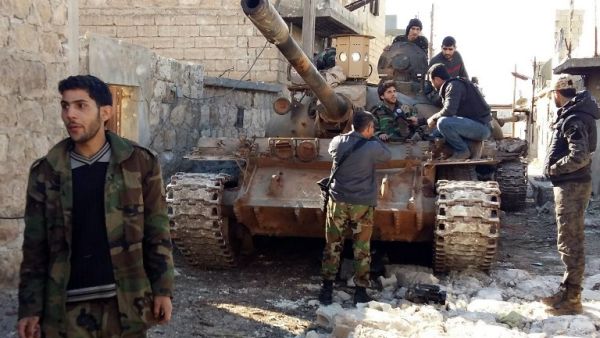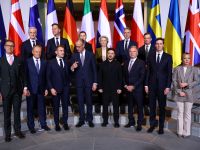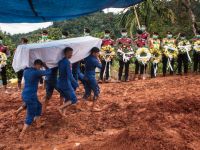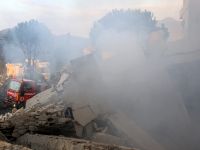In 1973, an Arab-Israeli war almost led to a nuclear confrontation between two superpowers. The United States and the Soviet Union put their strategic forces on high alert after Israel breached the fragile ceasefire on both the Egyptian and the Syrian fronts. The crisis, however, soon abated in favour of a diplomatic solution. This episode represented the height of the Cold War (1945-1991) in the Middle East. For decades, the two competing superpowers armed and supported state and non-state actors in the region to further their interests, and to block the adversary’s geopolitical machinations.
The Cold War came to an end when the Soviet Union ceased to exist on Christmas Day 1991. Yet since Russian President Vladimir Putin came to power in 1999, and especially after the 2008 conflict between a resurgent Russia and Nato-backed Georgia, many pundits have begun to circulate the notion that a new Cold War between Russia and the West is imminent. Speaking at the Munich Security Conference in Germany last weekend, Russian Prime Minister Dmitry Medvedev said he sometimes found himself wondering whether this was 2016 or 1962.
In 2016 the Cold War is reincarnated atop the restless ridgelines and on the open fields across the Syrian-Turkish border. The risks of a Western-Russian clash in the Middle East are as high today as they were back at the height of the Cold War, making it absolutely necessary to understand the dynamics, friction points and possible triggers of this renewed global conflict against the backdrop of an already complex war in Syria.
In early October 2015, the Russians began a fierce aerial bombardment campaign to support unprecedented mass-scale operations by the Syrian Army. The stated aim was fighting terrorism, but the stakes were much higher. Facing Western sanctions and political isolation since 2013, Russia was seeking to reassert its status as a global power, no less able to project its influence and fight terrorism around the world than its old time adversary the US.
There were, however, many local and regional complicating factors. The mountains north of Latakia, Syria’s gateway to the Mediterranean, not only sheltered extremist factions, but were also home to a concentration of the Turkmen minority in Syria. Turkey, a NATO member, was watching restlessly as both its rebel allies and Turkic militants came under a relentless assault. Tensions came to a head on November 24 when a pair of Turkish F-16s shot down a Russian bomber over northern Latakia. The incident was the first direct confrontation between Russia and a Nato member since the Cold War.
Putin exploded following the incident. He labelled the Turkish action a “stab in the back,” from those who “support the terrorists”. Russia introduced economic sanctions against Turkey, and moved the state-of-the-art S-400 air-defence system into its airbase in Latakia.
But the most direct form of Russian retaliation against Turkey was the intensification of the air campaign, especially near the Turkish border, which enabled the Syrian Army to recapture the city of Salma, the impervious rebel capital of Latakia province since 2012. From there, the Syrian Army continues to push north, and it’s now standing a mere four kilometres short of the Turkish border.
Putin did not stop there. He found an unlikely ally in the PYD, the Kurdish Democratic Union Party, and its military arm, the YPG — the Kurdish local protection militias in Syria. Back in October, the YPG had formed the backbone of the Syrian Democratic Forces, an allegedly American concoction aimed mainly at fighting Daesh. Few, however, imagined that the Kurds might align themselves with both global powers at the same time.
Many analysts saw the resurgence of political and military tensions between Russia and the West following the annexation of Crimea and eruption of conflict in eastern Ukraine as the starting point of the new Cold War. In Ukraine, however, a direct confrontation between Russia and NATO is highly unlikely.
In Syria, however, the combination of the Russian air defence umbrella and bombing raids, and the push towards the Turkish (NATO) border by both the Syrian Army and the Kurdish locals have turned the war-ravaged country into the primary frontier of a renewed confrontation between Russia and the West. Northern Syria, as opposed to eastern Ukraine, is the place where the risks of a Cold War turning hot are clear and present.
In the ongoing vicious game of power, all players have a motive to escalate, and the triggers are abundant. The Turks do not want their border to fall to unfriendly hands, specifically the YPG or the Syrian Army. The Syrian government wants to reach its border with Turkey, in order to reestablish its authority. The Americans, on their part, seem ambivalent about the recent development in Aleppo, merely urging restraint on all parties involved. The Russians want to exact revenge on Turkey, and Putin, above all, wants to outflank NATO.
If Russia and Turkey end up clashing over Latakia, Aleppo, or both, one critical question stands out: Will Nato implement Article 5 of its charter and confront Russia in defence of Turkey? Or will the Western powers choose diplomacy to avoid a clash with the nuclear-armed great power over an ever-entangled Middle East? The next few days may very well hold the answer.
Fadi Esber is a research associate at the Damascus History Foundation, an online project aimed at collecting and protecting the endangered archives of the Syrian capital.
Editor's note: This article has been edited for length.








